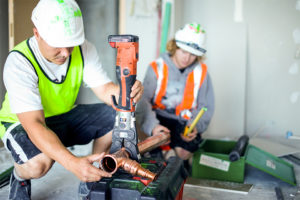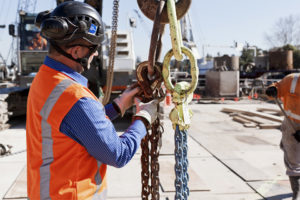What do riggers do?
Riggers can be seen in large building sites across New Zealand, using complex rigging systems to transport large items into place. It’s a highly skilled job that plays a vital role in making sure buildings and structures are constructed safely and smoothly.
Riggers are responsible for safely setting up and controlling the movement of loads, which are usually suspended, over distance. You will operate a variety of hoisting devices and rigging equipment. It’s a great career choice if you enjoy working at heights.
On any given day you could be:
- Preparing and operating an elevated work platform (EWP)
- Assessing and preparing the worksite
- Using and maintaining rigging hand tools
- Setting up and taking down height safety systems
- Developing plans to keep people safe when working at height






